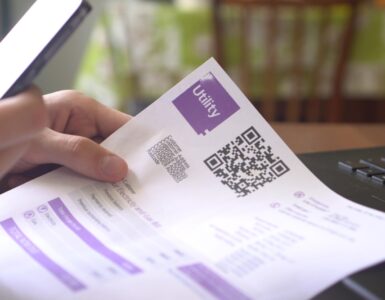If so, you will want to absorb all the info in this guide, as we will answer the question: How long does rental assistance take? Even better, we’ll reveal how to get rent assistance fast.
Enjoying cheaper rent or living in a more affordable apartment could probably fix your finances and leave you with more wiggle room in your budget for other bills. How can you get cheaper rent, though, when the cost of everything seems to be going up? The answer is to find programs that help with rent, which is what we will focus on today so you can reduce how much you pay your landlord each month.
While getting government help with rent can lower your out-of-pocket housing costs, it typically comes with a significant problem: You have to wait. How long does rental assistance take? Let’s tackle that topic now and how to get it quicker.
Table Of Contents: How Long Does Rent Assistance Take?
- How Long Does It Take To Get A Section 8 Voucher?
- How To Accelerate The Section 8 Process
- Section 8 Waitlist Preferences
- Find Affordable Housing Faster On Your Own
How Long Does Rent Assistance Take?
As you search for government help with rent, you will likely encounter this popular program: Section 8. Also called the Housing Choice Voucher program, Section 8 is considered by many to be one of the best forms of rental assistance today. Why? Because with a Section 8 voucher, your out-of-pocket rent costs will be capped at 30 percent of your income. If you pay over 50 percent of your income towards rent right now, the prospects of only paying 30 percent are probably quite intriguing.
What is the main issue with Section 8? The same issue that tends to plague other programs that help with rent: The help is typically not immediate, so if you are in dire need of emergency rent assistance, you may need to call quicker rent resources, such as 211. Your 211 operator may be able to connect you to local programs that help with rent until you can get your Section 8 voucher. They may also direct you to charities or other places that help with housing until you can fix your finances.
How Long Does It Take To Get A Section 8 Voucher?
We already mentioned that getting a Section 8 voucher is not a speedy process, but how long will your actual wait be?
The time it takes to receive a Section 8 voucher can vary depending on a number of factors, including the demand for housing assistance in your area and the availability of funding. On average, it can take several months to a year or more to get a Section 8 voucher. In some areas with high demand, the waitlist for the program can be several years long. In fact, some stories are circulating that Section 8 applicants in high-demand cities have been given wait times of up to 10 years. If this seems excessive or surprising, you must remember that Section 8 is perhaps the most popular of all programs that help with rent.
It’s also important to note that the process of applying for and receiving a Section 8 voucher can be complex and time-consuming, as you may need to provide documentation and information to verify your income, citizenship status, and other eligibility requirements. Additionally, after you receive your voucher, you’ll need to find a landlord who participates in the program and is willing to rent to you, which can take additional time.
In general, it’s a good idea to be prepared for a long wait when applying for a Section 8 voucher, and to keep in touch with your local Public Housing Agency (PHA) to find out about the status of your application.
How To Accelerate The Section 8 Process
If it can take up to 10 years in extreme cases to get your Section 8 voucher, should you skip this form of government help with rent altogether? And are you better off seeking other places that help with housing? The answer is no, as Section 8 can help you enjoy affordable housing well into the future. Plus, you can get your voucher quicker by trying these tips:
- Check for waiting list openings – Contact your local Public Housing Agency to see if they have any waiting list openings and if you are eligible to apply.
- Check for special programs – Some PHAs have special programs for veterans, disabled individuals, or the elderly that may have shorter waiting lists. These are called “preferences,” and we will discuss them in further detail in a minute.
- Meet eligibility requirements – Make sure you meet all the eligibility requirements for the Section 8 program, including income limits, citizenship status, and rental history.
- Apply for multiple programs – Consider applying for multiple Section 8 programs via various Public Housing Agencies, both locally and in nearby areas, to increase your chances of getting a voucher. The more flexible you are in terms of where you would like to move, the better, as you may have more affordable housing opportunities and faster waitlists elsewhere.
- Keep your information up-to-date – If you’re already on a waiting list, make sure your contact information is up-to-date so the PHA can reach you when a voucher becomes available. If any information on your profile is outdated, it could cause issues that will lengthen your voucher wait even more.
Again, it’s important to note that the demand for Section 8 vouchers often exceeds the supply, so it may take some time to receive a voucher. However, by following those steps, you can increase your chances of getting one faster.
Section 8 Waitlist Preferences
As promised, it’s time to touch on Section 8 preferences that can reduce your Section 8 wait time. Since waitlists for Section 8 housing can be long and competitive, and many PHAs use preferences to determine who gets housing assistance first. Some typical Section 8 waitlist preferences include:
- Veterans – Veterans and their families are often given priority on Section 8 waitlists as a way to support those who have served in the military.
- Homeless individuals and families – Housing agencies may prioritize those currently experiencing homelessness or at risk of becoming homeless.
- Families with children – Families with children, especially those with young children, may receive priority on Section 8 waitlists.
- Elderly and disabled individuals – Older adults and individuals with disabilities are also often given priority, as they may have greater difficulty finding and maintaining housing on their own.
- Local residents – Some housing agencies give priority to local residents to ensure that the Section 8 program serves those in the community.
- Substandard housing – You could move up on the waiting list if your current home is unsafe, lacks plumbing or electricity, or has other issues endangering your family.
It’s important to note that not all housing agencies use the same preferences, and some may use different criteria altogether. Additionally, waitlist preferences can change over time, so it’s a good idea to check with your local housing authority for the most up-to-date information. Don’t forget to contact your PHA if your situation changes and a new waitlist preference applies, as it can move further up the line so you can get affordable rent faster.
Find Affordable Housing Faster On Your Own
A Section 8 voucher can provide that long-term rental assistance you seek for stability, but its potentially long wait may not fix your financial issues right now. That’s why you should try to find affordable housing faster on your own, which is what the following tips can help you do.
The first tip is to use the HUD Resource Locator to pinpoint cheap rentals in your area. The HUD Resource Locator is a tool provided by the U.S. Department of Housing and Urban Development (HUD) to help people find local housing and community development resources, and it is one of the top rent resources around.
If you can use this tool to find a place with extremely affordable rent, you may not need a Section 8 voucher. The goal is to find affordable housing buildings near you, then contact them to see if they have any units that charge 30 percent of income. If so, that means you could get cheap rent equal to that provided by a Section 8 voucher without waiting years for your turn on the waitlist to arrive. Here is how to use the HUD Resource Locator:
- Go to the HUD Resource Locator website.
- Select a resource type – Choose the type of resource you’re looking for, such as homeless assistance, public housing, or housing counseling. For the purpose of this tip, you want to find affordable housing, which is accessible via the first menu option: “Find Affordable Housing Opportunities Near Me.”
- Enter a location – Type in your zip code, city, or state to find resources near you. You can also use the map to select a location. If your computer, phone, or tablet has location capabilities turned on, the HUD Resource Locator may show your local map automatically.
- Filter results – Use the filters to narrow down the results to only show resources that meet your specific needs. For example, via the top left section of the map, you can filter mapped resources by multifamily properties, public housing buildings, public housing developments, USDA rural housing, etc.
- View resources – The search results will show you a list of resources that match your criteria, along with contact information, services provided, and more.
- Contact a resource – If you find a resource/affordable housing building that you’re interested in, you can reach out to them directly for more information. You can contact them by phone or email in most cases. When doing so, remember to ask if they have units that charge 30 percent of income, which could allow you to enjoy the rental assistance savings of Section 8 without having to apply for an actual voucher.
Note that the HUD Resource Locator is updated regularly, but the availability of resources may change, so it’s always a good idea to verify the information with the resource directly. Although it may take some work to contact affordable housing buildings to find cheap rentals, the savings you can snag are well worth the effort.
Is the HUD Resource locator the only way to find affordable housing buildings that could get you cheap rent equal to that of a Section 8 voucher? No, as you can contact one of the most trustworthy places that help with housing: Your Public Housing Agency.
If that name has come up a lot in this guide, it is because your Public Housing Agency (PHA) is a one-stop shop for rental assistance. A counselor can offer free housing assistance not only by guiding you through the Section 8 process, but also by giving you a list of affordable housing buildings in your area.
A list of cheap rentals from your PHA can help you skip the work involved with finding those affordable housing contacts on your own. Then you can start contacting them until you find one with units that charge 30 percent of income. As for how some buildings can offer such cheap rent, that is because they may have their own funding that lets them pass on significant savings to tenants in need.
Although you should be able to find affordable housing buildings via the HUD Resource Locator and your PHA, there is another method to spot cheap rentals: Use search engines. Whether it is through Google, Bing, or some other search engine, you can type in phrases like “affordable housing buildings” or “income-based housing” in your desired city to see what pops up.
When using this method to find affordable apartments near you, be on the lookout for illegitimate websites. If any ask for payment to show you a list of affordable apartments or require that you enter personal information, look elsewhere. Such sites or rent resources may also be filled with outdated information, making your search harder. That is why we recommend using the HUD Resource Locator, your PHA, and official government websites to search for low-cost or income-based housing near you.




